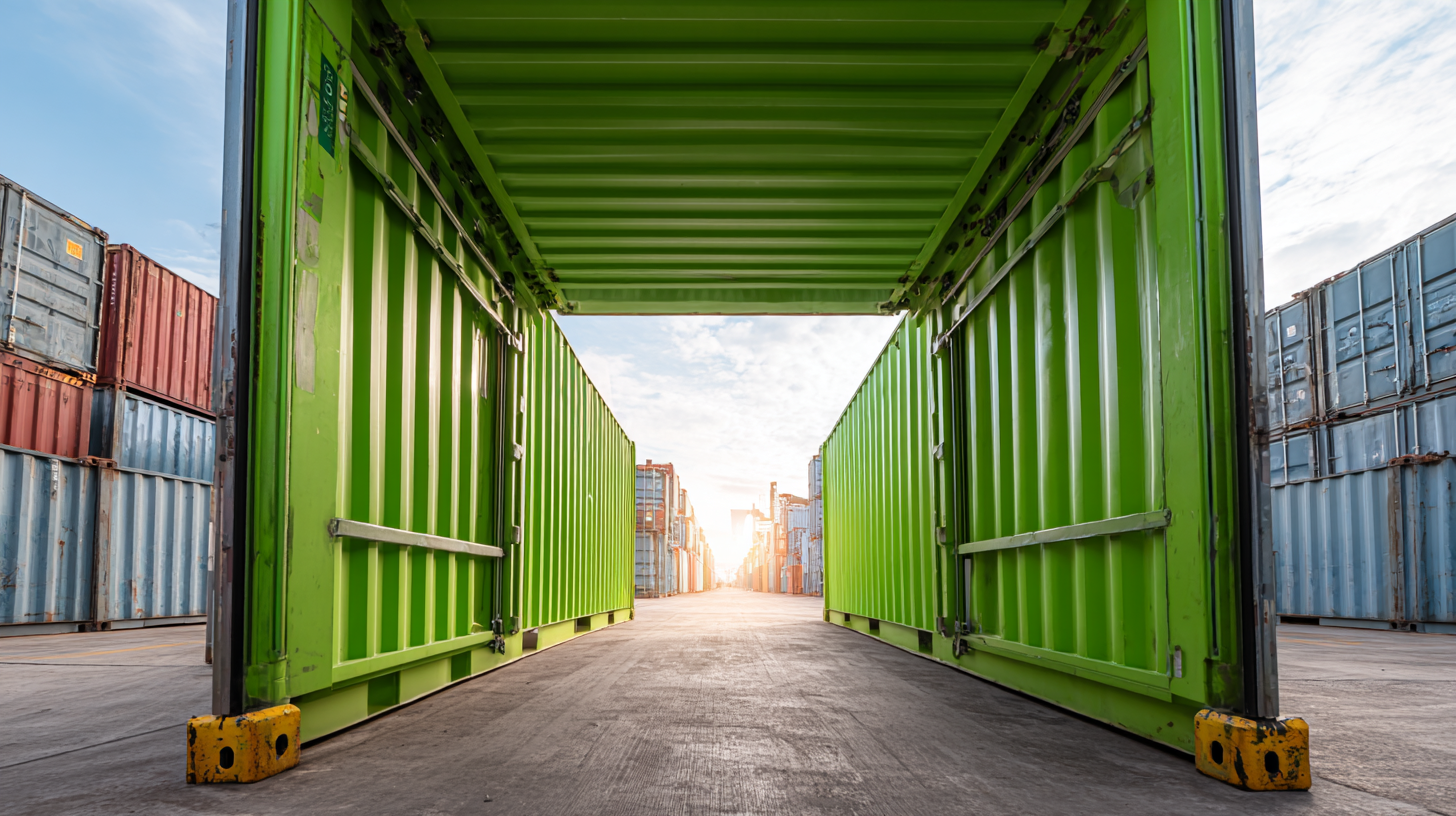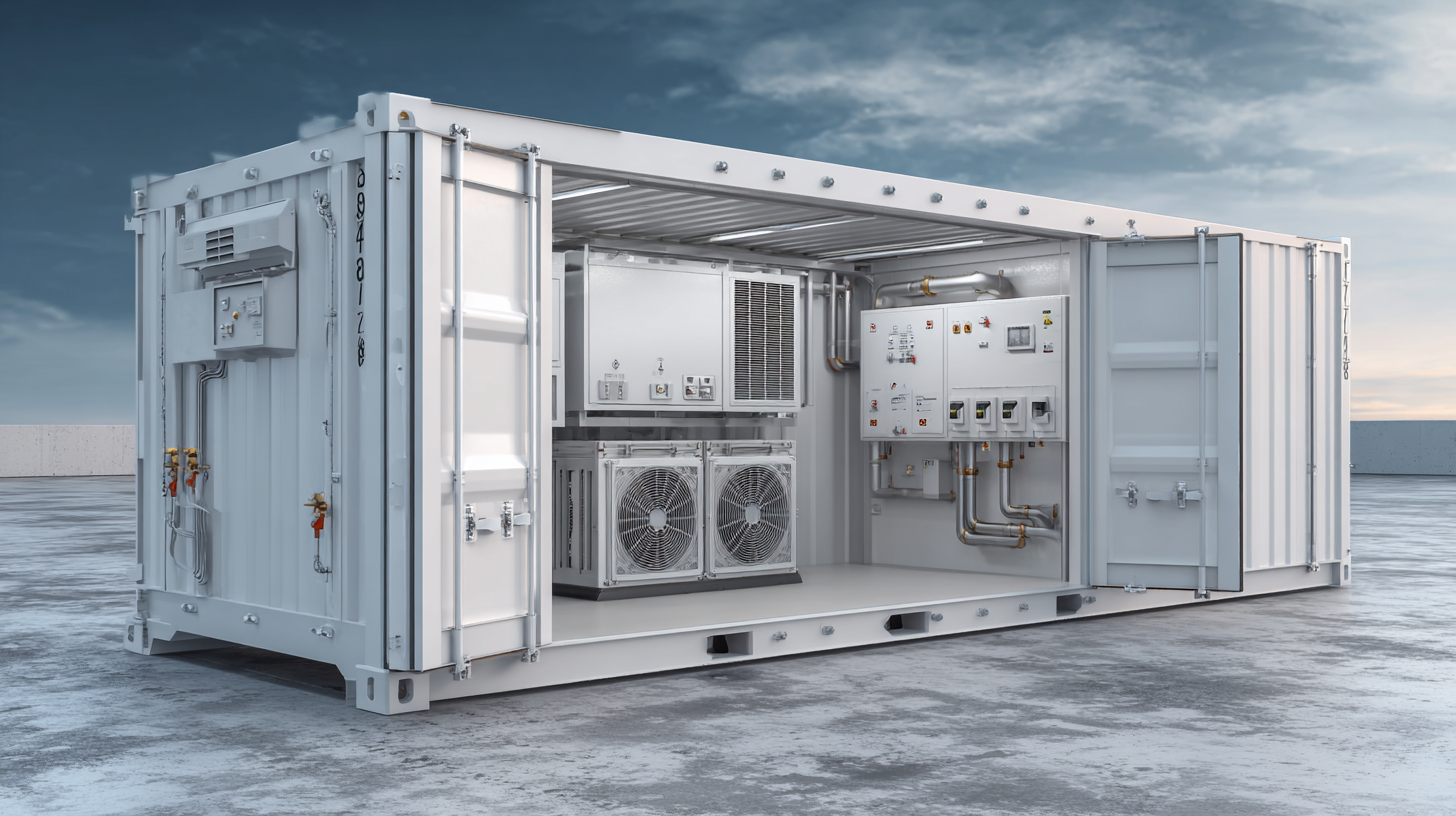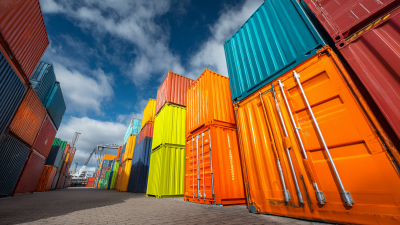Understanding Container Insulation: The Key to Energy Efficiency in Shipping and Storage
 In the realm of shipping and storage, energy efficiency has become a paramount concern, driving the quest for innovative solutions that minimize environmental impact while maximizing performance. One of the most critical elements in achieving this goal is container insulation. Understanding container insulation is essential for businesses looking to enhance their operational efficiency and reduce energy costs. By effectively insulating containers, companies can maintain optimal temperatures for sensitive goods, prevent spoilage, and reduce the reliance on energy-intensive refrigeration systems.
This article explores the various aspects of container insulation, including its benefits, materials, and implementation strategies. By delving into the intricacies of this technology, we aim to equip readers with the knowledge necessary to leverage container insulation as a key factor in achieving greater energy efficiency in their shipping and storage practices.
In the realm of shipping and storage, energy efficiency has become a paramount concern, driving the quest for innovative solutions that minimize environmental impact while maximizing performance. One of the most critical elements in achieving this goal is container insulation. Understanding container insulation is essential for businesses looking to enhance their operational efficiency and reduce energy costs. By effectively insulating containers, companies can maintain optimal temperatures for sensitive goods, prevent spoilage, and reduce the reliance on energy-intensive refrigeration systems.
This article explores the various aspects of container insulation, including its benefits, materials, and implementation strategies. By delving into the intricacies of this technology, we aim to equip readers with the knowledge necessary to leverage container insulation as a key factor in achieving greater energy efficiency in their shipping and storage practices.
The Importance of Container Insulation for Temperature Control in Shipping
Container insulation plays a crucial role in maintaining the integrity of temperature-sensitive goods during shipping. As global trade increases, the need for effective temperature control in containers becomes paramount. Insulation helps to minimize heat transfer, ensuring that perishable items such as food, pharmaceuticals, and delicate electronics remain within their optimal temperature ranges throughout transit. Without proper insulation, these items are at risk of spoilage or damage, leading to significant financial losses and waste.
In addition to protecting sensitive cargo, effective container insulation can contribute to overall energy efficiency in shipping operations. By reducing the need for active temperature control systems, insulated containers allow for lower energy consumption, which not only cuts costs but also reduces greenhouse gas emissions. This sustainable approach to logistics not only meets the growing demand for eco-friendly practices but also enhances the reliability of shipping processes, ensuring that products arrive at their destinations in the best possible condition.
Understanding Container Insulation: The Key to Energy Efficiency in Shipping and Storage
Key Materials for Effective Container Insulation in the Logistics Industry
Effective container insulation is crucial for enhancing energy efficiency in the logistics industry. Various materials play a vital role in providing thermal insulation, ensuring that goods maintain their required temperatures during shipping and storage. Among these, expanded polystyrene (EPS) has gained significant traction due to its lightweight nature, excellent thermal performance, and cost-effectiveness. The demand for EPS in packaging has surged, particularly within the food and beverage sector, driving growth in the insulated packaging market.
Moreover, advancements in vacuum insulation panels (VIPs) present a promising solution for energy-efficient shipping. VIPs are becoming increasingly popular in cold chain logistics, where maintaining precise temperatures is essential. The global market for VIPs is projected to witness substantial growth as industries prioritize sustainable packaging solutions. With the insulated packaging market expected to expand significantly over the coming years, focusing on these key materials will be essential for companies aiming to enhance their operational efficiency and reduce their environmental impact.
Energy Savings: How Proper Insulation Reduces Fuel Costs in Shipping
Proper insulation in shipping containers is crucial for achieving energy efficiency and reducing operational costs. By minimizing heat loss or gain, well-insulated containers ensure that temperature-sensitive goods remain stable, reducing the need for excessive heating or cooling. This translates directly into lower fuel consumption and cost savings for shipping companies. For instance, improving insulation can significantly cut down the energy required to maintain optimal temperatures during transit, ultimately leading to a reduction in greenhouse gas emissions.

Moreover, the adoption of energy-efficient practices, including enhanced insulation, aligns with broader initiatives aimed at tackling climate change and lowering household energy costs. As governments push towards ambitious carbon reduction goals, the shipping and storage industries can play a pivotal role. By investing in proper insulation techniques, industry players not only benefit financially but also contribute to a more sustainable future, echoing the sentiments of global energy efficiency efforts. This dual advantage underscores the importance of innovation in insulation technologies as a pathway to enhanced energy savings in shipping.
Tips for Selecting the Right Insulation for Different Cargo Types
When it comes to container insulation for shipping and storage, selecting the right insulation material is crucial for maintaining the integrity of various cargo types. Different materials respond uniquely to temperature fluctuations and moisture levels, making it essential to match insulation properties to the specific needs of the cargo. For instance, perishable goods require high-performance insulation that provides superior thermal resistance to prevent spoilage, while hazardous materials may need specialized insulation that meets safety regulations.
Additionally, the choice of insulation should consider the expected transport conditions. If the cargo is likely to be exposed to extreme temperatures or varying humidity levels, insulation materials with excellent durability and moisture resistance are paramount. Furthermore, factors such as breathability, overall weight, and cost should also guide the selection process. By carefully evaluating these elements, businesses can enhance energy efficiency, reduce waste, and ultimately ensure that their products arrive at their destination in optimal condition.
Best Practices for Maintaining Container Insulation During Transport and Storage
Maintaining effective container insulation during transport and storage is crucial for preserving the integrity of goods, particularly those sensitive to temperature fluctuations. To achieve this, it is vital to choose insulated containers that meet the specific needs of the cargo. For instance, using containers with high-quality thermal barriers can significantly reduce heat transfer, ensuring that perishable items remain at stable temperatures throughout their journey. Regular inspections before and after transport can identify any potential weak points in the insulation, allowing for prompt repairs to avoid drastic temperature changes.
 Furthermore, proper loading and packing techniques can enhance insulation performance. Avoiding overcrowding within containers ensures adequate airflow, which helps maintain a consistent temperature. Additionally, using insulation materials, such as foam fillers or mylar blankets, can reinforce container walls and ceilings, providing extra protection against external temperature variations. Implementing these best practices not only boosts energy efficiency but also minimizes spoilage and waste, ultimately leading to cost savings and environmental benefits over time.
Furthermore, proper loading and packing techniques can enhance insulation performance. Avoiding overcrowding within containers ensures adequate airflow, which helps maintain a consistent temperature. Additionally, using insulation materials, such as foam fillers or mylar blankets, can reinforce container walls and ceilings, providing extra protection against external temperature variations. Implementing these best practices not only boosts energy efficiency but also minimizes spoilage and waste, ultimately leading to cost savings and environmental benefits over time.
Related Posts
-

Exploring the Future of Sustainable Living with Container Cabins
-

Transform Your Space: The Rise of Shipping Containers for Storage and Their Eco-Friendly Benefits
-

Unlocking the Future of Sustainable Living through Innovative Container Conversions
-

Unlocking Value: The Sustainable Benefits of Using Second Hand Storage Containers for Your Home

